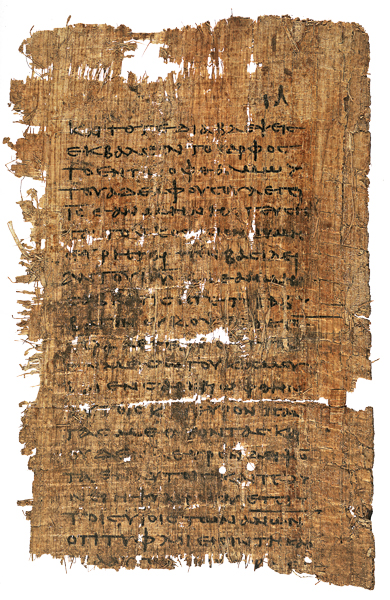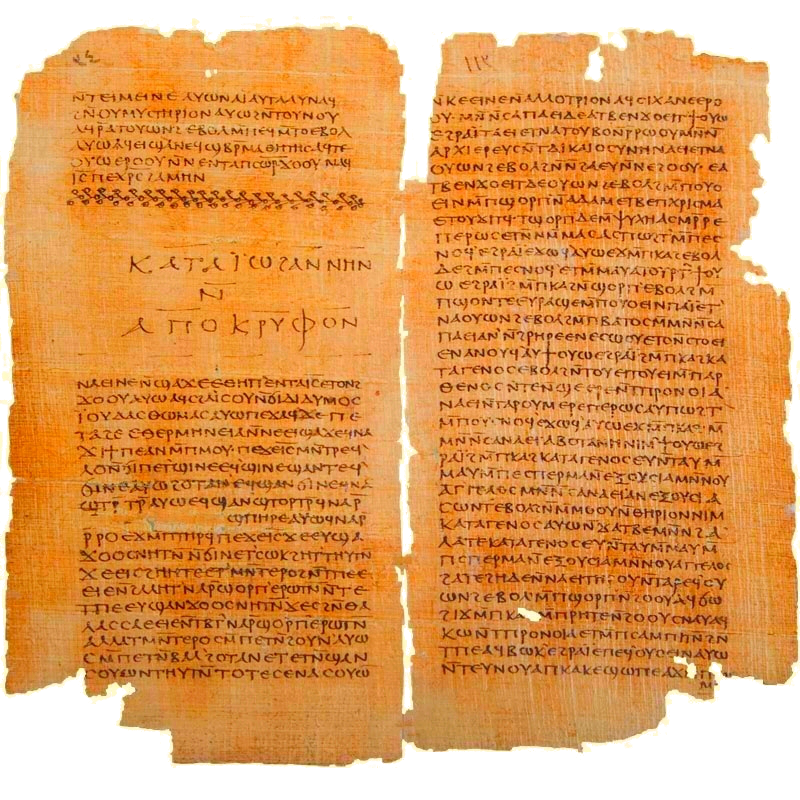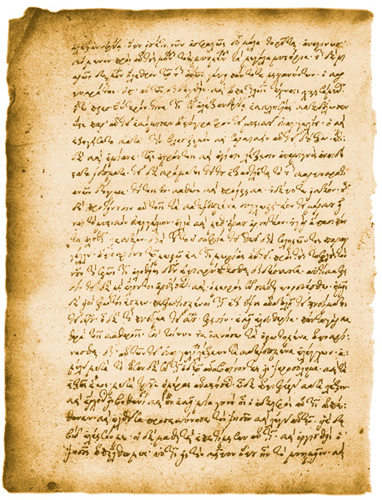|
Craig A. Evans
Craig Alan Evans (born January 21, 1952) is an American biblical scholar. He is a prolific writer with 70 books and over 600 journal articles and reviews to his name. Career He earned his B.A in history and philosophy from Claremont McKenna College, a Master of Divinity from Western Baptist Seminary in Portland, Oregon, and his Master of Arts and Ph.D. in Biblical Studies from Claremont Graduate University in southern California. He is John Bisagno Distinguished Professor of Christian Origins at Houston Baptist University. Prior to Houston Baptist, he was Payzant Distinguished Professor of New Testament and director of the graduate program at Acadia Divinity College in Wolfville, Nova Scotia, a visiting assistant professor of religious studies at McMaster University and a professor of biblical studies at Trinity Western University. [...More Info...] [...Related Items...] OR: [Wikipedia] [Google] [Baidu] |
McMaster University
McMaster University (McMaster or Mac) is a public research university in Hamilton, Ontario, Canada. The main McMaster campus is on of land near the residential neighbourhoods of Ainslie Wood and Westdale, adjacent to the Royal Botanical Gardens. It operates six academic faculties: the DeGroote School of Business, Engineering, Health Sciences, Humanities, Social Science, and Science. It is a member of the U15, a group of research-intensive universities in Canada. The university bears the name of William McMaster, a prominent Canadian senator and banker who bequeathed C$900,000 to its founding. It was incorporated under the terms of an act of the Legislative Assembly of Ontario in 1887, merging the Toronto Baptist College with Woodstock College. It opened in Toronto in 1890. Inadequate facilities and the gift of land in Hamilton prompted its relocation in 1930. The Baptist Convention of Ontario and Quebec controlled the university until it became a privately chartered, pu ... [...More Info...] [...Related Items...] OR: [Wikipedia] [Google] [Baidu] |
Jesus
Jesus, likely from he, יֵשׁוּעַ, translit=Yēšūaʿ, label=Hebrew/Aramaic ( AD 30 or 33), also referred to as Jesus Christ or Jesus of Nazareth (among other names and titles), was a first-century Jewish preacher and religious leader; he is the central figure of Christianity, the world's largest religion. Most Christians believe he is the incarnation of God the Son and the awaited Messiah (the Christ) prophesied in the Hebrew Bible. Virtually all modern scholars of antiquity agree that Jesus existed historically. Research into the historical Jesus has yielded some uncertainty on the historical reliability of the Gospels and on how closely the Jesus portrayed in the New Testament reflects the historical Jesus, as the only detailed records of Jesus' life are contained in the Gospels. Jesus was a Galilean Jew who was circumcised, was baptized by John the Baptist, began his own ministry and was often referred to as "rabbi". Jesus debated with fellow Jews on ho ... [...More Info...] [...Related Items...] OR: [Wikipedia] [Google] [Baidu] |
Gospel Of Mary
The Gospel of Mary is a non-canonical text discovered in 1896 in a 5th-century papyrus codex written in Sahidic Coptic. This Berlin Codex was purchased in Cairo by German diplomat Carl Reinhardt. Although the work is popularly known as the Gospel of Mary, it is not classed as a gospel by some scholars, who restrict the term 'gospel' to texts "primarily focused on recounting the teachings and/or activities of Jesus during his adult life". History The Berlin Codex, also known as the Akhmim Codex, also contains the ''Apocryphon of John'', the ''Sophia of Jesus Christ'', and a summary of the ''Act of Peter''. All four works contained in the manuscript are written in the Sahidic dialect of Coptic. Two other fragments of the Gospel of Mary have been discovered since, both written in Greek ( Papyrus Oxyrhynchus L 3525 and Papyrus Rylands 463). P.Oxy. L 3525 "... was in fact found by Grenfell and Hunt some time between 1897 and 1906, but only published in 1983," by P. J. Parsons. T ... [...More Info...] [...Related Items...] OR: [Wikipedia] [Google] [Baidu] |
Gospel Of Judas
The Gospel of Judas is a non-canonical Gnostic gospel. The content consists of conversations between Jesus and Judas Iscariot. Given that it includes late 2nd-century theology, it is widely thought to have been composed in the 2nd century (prior to 180 AD) by Gnostic Christians, rather than the historic Judas himself. The only copy of it known to exist is a Coptic language text that has been carbon dated to 280 AD, plus or minus 60 years. It has been suggested that the text derives from an earlier manuscript in the Greek language An English translation was first published in early 2006 by the National Geographic Society. Significance In contrast to the canonical gospels, which paint Judas as a betrayer who delivered Jesus to the authorities for crucifixion in exchange for money, the Gospel of Judas portrays Judas's actions as done in obedience to instructions given to him by Jesus. It asserts that the other disciples had not learned the true Gospel, which Jesus taught only to ... [...More Info...] [...Related Items...] OR: [Wikipedia] [Google] [Baidu] |
Egerton Gospel
The Egerton Gospel (British Library Egerton Papyrus 2) refers to a collection of three papyrus fragments of a codex of a previously unknown gospel, found in Egypt and sold to the British Museum in 1934; the physical fragments are now dated to the very end of the 2nd century CE. Together they comprise one of the oldest surviving witnesses to any gospel, or any codex. The British Museum lost no time in publishing the text: acquired in the summer of 1934, it was in print in 1935. It is also called the Unknown Gospel, as no ancient source makes reference to it, in addition to being entirely unknown before its publication. Provenance Three fragments of the manuscript form part of the Egerton Collection in the British Library. A fourth fragment of the same manuscript has since been identified in the papyrus collection of the University of Cologne. The provenance of the four fragments is a matter of some dispute. Throughout the 20th century the provenance of the Egerton fragments was ... [...More Info...] [...Related Items...] OR: [Wikipedia] [Google] [Baidu] |
Gospel Of Peter
The Gospel of Peter ( grc, κατά Πέτρον ευαγγέλιον, kata Petron euangelion), or the Gospel according to Peter, is an ancient text concerning Jesus Christ, only partially known today. It is considered a non-canonical gospel and was rejected as apocryphal by the Church's synods of Carthage and Rome, which established the New Testament canon. It was the first of the non-canonical gospels to be rediscovered, preserved in the dry sands of Egypt. A major focus of the surviving fragment of the Gospel of Peter is the passion narrative, which ascribes responsibility for the crucifixion of Jesus to Herod Antipas rather than to Pontius Pilate. Composition Authorship The Gospel of Peter explicitly claims to be the work of Saint Peter: However, scholars generally agree that the Gospel of Peter is pseudepigraphical (bearing the name of an author who did not actually compose the text). The true author of the gospel remains a mystery. Although there are parallels ... [...More Info...] [...Related Items...] OR: [Wikipedia] [Google] [Baidu] |
Gospel Of Thomas
The Gospel of Thomas (also known as the Coptic Gospel of Thomas) is an extra-canonical Logia, sayings gospel. It was discovered near Nag Hammadi, Egypt, in December 1945 among a group of books known as the Nag Hammadi library. Scholars speculate that the works were buried in response to a letter from Bishop Athanasius of Alexandria, Athanasius declaring a strict canon of Christian scripture. Scholars have proposed dates of composition as early as 60 AD and as late as 250 AD. Since its discovery, many scholars have seen it as evidence in support of the existence of a "Q source" which might have been very similar in its form as a collection of sayings of Jesus without any accounts of his deeds or his life and death, referred to as a sayings gospel. The Coptic language text, the second of seven contained in what modern-day scholars have designated as Nag Hammadi Codex II, is composed of 114 sayings attributed to Jesus. Almost two-thirds of these sayings resemble those found in t ... [...More Info...] [...Related Items...] OR: [Wikipedia] [Google] [Baidu] |
New Testament Apocrypha
The New Testament apocrypha (singular apocryphon) are a number of writings by early Christians that give accounts of Jesus and his teachings, the nature of God, or the teachings of his apostles and of their lives. Some of these writings were cited as scripture by early Christians, but since the fifth century a widespread consensus has emerged limiting the New Testament to the 27 books of the modern canon. Roman Catholic, Eastern Orthodox, and Protestant churches generally do not view the New Testament apocrypha as part of the Bible. Definition The word "apocrypha" means "things put away" or "things hidden", originating from the Medieval Latin adjective ''apocryphus'', "secret" or "non-canonical", which in turn originated from the Greek adjective (''apokryphos''), "obscure", from the verb (''apokryptein''), "to hide away". From the Greek prefix "apo" which means "away" and the Greek verb "kryptein" which means "to hide". The general term is usually applied to the books that w ... [...More Info...] [...Related Items...] OR: [Wikipedia] [Google] [Baidu] |
Elaine Pagels
Elaine Pagels, née Hiesey (born February 13, 1943), is an American historian of religion. She is the Harrington Spear Paine Professor of Religion at Princeton University. Pagels has conducted extensive research into early Christianity and Gnosticism. Her best-selling book ''The Gnostic Gospels'' (1979) examines the divisions in the early Christian church, and the way that women have been viewed throughout Jewish history and Christian history. Modern Library named it as one of the 100 best books of the twentieth century. Early life and education Pagels (pronounced Paygulls) was born February 13, 1943, in California. She is the daughter of Stanford University botanist William Hiesey. According to Pagels, she has been fascinated with the Gospel of John since her youth. She found it to be "the most spiritual of the four gospels". After joining an Evangelical church at the age of 13, she quit when the church announced that a Jewish friend of hers who had been killed in a car crash wo ... [...More Info...] [...Related Items...] OR: [Wikipedia] [Google] [Baidu] |
Michael Baigent
Michael Baigent (born Michael Barry Meehan, 27 February 1948 – 17 June 2013) was a New Zealand writer who published a number of popular works questioning traditional perceptions of history and the Historical Jesus, life of Jesus. He is best known as a co-author of the book ''The Holy Blood and the Holy Grail''. Biography Baigent was born on 27 February 1948 in Nelson, New Zealand and spent his childhood in the nearby communities of Motueka and Wakefield, New Zealand, Wakefield. His father was a devout Catholic, and he was tutored in Catholic theology from the age of five. After his father left the family when Baigent was eight years old, he went to live with his maternal grandfather, Lewis Baigent and took his surname. His great-grandfather, Henry Baigent served as a Nelson city mayor and had founded a forestry firm, H. Baigent and Sons. His secondary schooling was at Nelson College, and then he moved on to the University of Canterbury, Christchurch, initially intending to stud ... [...More Info...] [...Related Items...] OR: [Wikipedia] [Google] [Baidu] |
James Tabor
James Daniel Tabor (born 1946 in Texas) is a Biblical scholar and Professor of Ancient Judaism and Early Christianity in the Department of Religious Studies at the University of North Carolina at Charlotte, where he has taught since 1989 and served as Chair from 2004–14. He previously held positions at Ambassador College (1968–70 while a student at Pepperdine University), the University of Notre Dame (1979–85), and the College of William and Mary (1985–89). Tabor is the founder and director of the Original Bible Project, a non-profit organisation aimed to produce a re-ordered new translation of the Bible in English. He retired in 2022. Background Tabor was born in Texas but lived all over the world as the son of an Air Force officer. He was raised in the Churches of Christ and attended Abilene Christian University, where he earned his B.A. degree in Koine Greek and Bible. While earning his M.A. from Pepperdine University he taught Greek and Hebrew part-time at Ambassador ... [...More Info...] [...Related Items...] OR: [Wikipedia] [Google] [Baidu] |
Morton Smith
Morton Smith (May 28, 1915 – July 11, 1991)Neusner, Jacob, ''Christianity, Judaism, and other Greco-Roman Cults. Part 1: New Testament'', ed. J. Neusner, ''Studies for Morton Smith at Sixty, vol 1, New Testament'' (Leiden: E.J. Brill, 1975), p. ix.Calder III, William M. “Smith, Morton”, in ''Biographical Dictionary of North American Classicists'', Ward W. Briggs, Jr., (ed.) (Westport, CT: Greenwood Press, 1994), p. 600. was an American professor of ancient history at Columbia University. He is best known for his reported discovery of the Mar Saba letter, a letter attributed to Clement of Alexandria containing excerpts from a Secret Gospel of Mark, during a visit to the monastery at Mar Saba in 1958. This letter fragment has had many names, from ''The Secret Gospel'' through ''The Mar Saba Fragment'' and the ''Theodoros''. Biography Smith was born in Philadelphia on May 28, 1915. He received his bachelor's degrees from Harvard College and the Harvard Divinity School, a Ph.D. ... [...More Info...] [...Related Items...] OR: [Wikipedia] [Google] [Baidu] |






